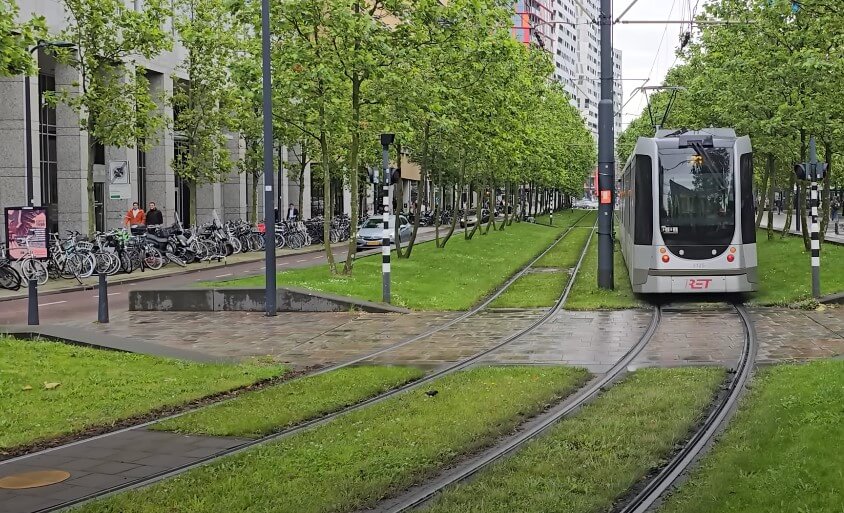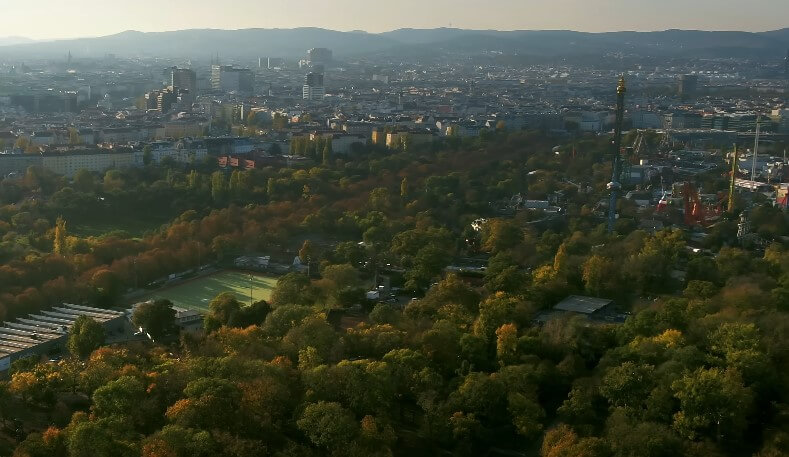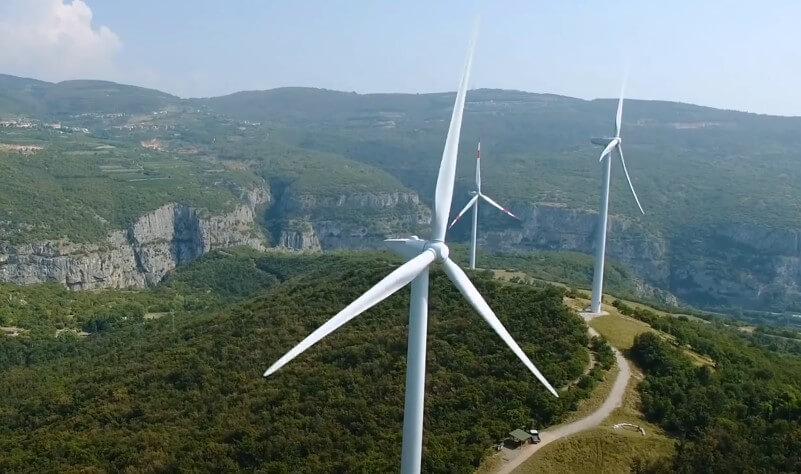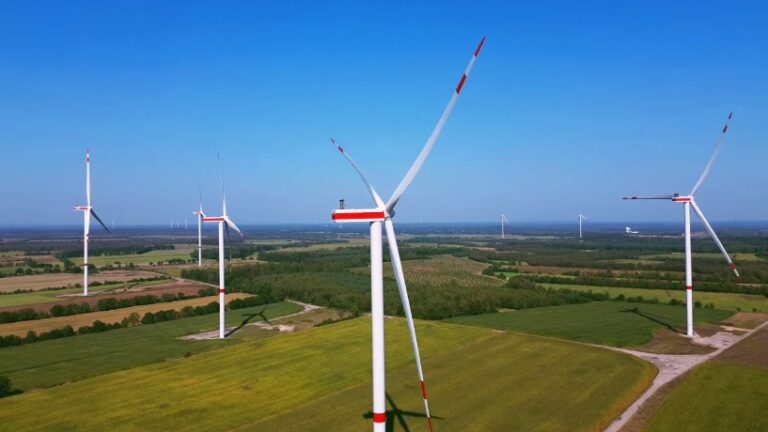Europe continues to lead global efforts in environmental sustainability, with many countries making climate-conscious living part of everyday life.
Energy efficiency, clean air, strong recycling systems, and public participation all contribute to an eco-friendly lifestyle.
Environmental Performance Index (EPI) scores, investment in renewable energy, sustainable urban development, and high-performing public transport are key markers of progress.
Without further ado, let us talk about the best eco-friendly countries to live in Europe.
10. Netherlands

Netherlands turns climate challenges into innovation.
Living below sea level has driven investments in water management, sustainable transport, and circular urban planning.
Highlights:
- Amsterdam’s circular economy projects cut waste and reuse materials
- Water recycling technologies are widely adopted
- Biking is not just a habit but a lifestyle supported by policy
- Green hotels and solar-powered buildings are widely accessible
Best Cities:
Amsterdam leads with smart waste systems, sustainable tourism like Plastic Whale canal tours, and eco-conscious accommodations. Public campaigns support climate action at the citizen level.
9. Portugal
Portugal has emerged as an eco-leader through clean energy expansion and a strong emphasis on sustainable living.
Programs such as the Portugal golden visa have attracted international residents interested in sustainable living, renewable energy investment, and eco-conscious lifestyle opportunities.
Policies target both urban and marine environments.
Highlights:
- Investments in wind and solar energy grow yearly
- Plastic reduction laws and recycling initiatives are enforced nationally
- Urban farming and organic markets are gaining traction
- Cities are increasingly walkable with better air quality
Best Cities:
8. Austria

Austria maintains low pollution levels while promoting green public infrastructure and nature in urban settings.
Environmental protection and cultural sustainability are key to national identity.
Highlights:
- Extensive parklands integrated into city designs
- Vienna applies smart water and waste management technologies
- Strict regulations ensure green construction practices
- Climate-neutral targets embedded in urban strategies
Best Cities:
Vienna aims for carbon neutrality by 2040. More than half the city consists of green space, while intelligent systems control utilities to limit waste and optimize resources.
7. Germany
Germany pioneers renewable energy adoption and environmental awareness.
Recycling rates are among the highest globally, and long-distance cycling is a key transportation strategy.
Highlights:
- Energiewende program pushes renewable electricity to over 40% of the mix
- More than 200 long-distance bike trails connect cities and nature
- Public transport systems rated among Europe’s most efficient
- Innovative climate protection policies include incentives for solar installation
Best Cities:
Freiburg is known for solar neighborhoods and pedestrian-first zones. Berlin drives green tech and climate research with open-access data and circular economy experiments.
6. France
France has made significant progress through green city initiatives, reduction of food waste, and investment in cycling infrastructure.
Urban policy now emphasizes walkability, greener public spaces, and support for local products.
Highlights:
- Paris has introduced car-free zones and expanded bike lanes
- Local markets encourage seasonal, low-impact consumption
- Hydropower and wind projects contribute to a cleaner energy mix
- National plans support reforestation and biodiversity
Best Cities:
Paris leads with sustainable design and efficient public transport. Lyon and Cannes follow with green spaces, alternative transport solutions, and eco-renovations of urban areas.
5. Switzerland
View this post on Instagram
Switzerland approaches sustainability with precision and long-term planning.
Through its ‘Swisstainable’ initiative, the country fosters responsible travel, energy conservation, and recycling as daily habits.
Highlights:
- One of the world’s best recycling systems
- Electric-powered public transport integrated into urban areas
- Clean mountain environments protected through strict environmental laws
- Visitors receive free local transport passes in many regions to reduce car use
Best Cities:
Zurich excels in adaptive lighting to save energy, smart waste collection systems, and green-certified construction. Public awareness campaigns keep eco-friendly behaviors high.
4. Norway

Norway combines renewable energy leadership with a proactive climate agenda.
Over half of the new cars sold are electric, and the government seeks to achieve carbon neutrality by 2030.
Highlights:
- Clean transportation dominates urban mobility
- Nature conservation laws protect fjords and forests
- Eco-tourism programs raise awareness through immersive experiences
- Hydropower fuels most domestic energy needs
Best Cities:
Oslo promotes sustainable living through the FutureBuilt program and offers fully zero-emission public transport options. Green rooftops, urban gardening, and strict building standards shape city life.
3. Sweden
Sweden maintains a strong recycling culture and ranks among Europe’s leaders in climate protection.
With a national goal of net-zero emissions by 2045, the public and private sectors work together toward long-term sustainability.
Highlights:
- Over 99% of household waste is recycled or converted into energy
- Stockholm is home to eco-districts like Hammarby Sjöstad
- National climate law drives regular evaluations of progress
- Smart mobility solutions supported by extensive bike lanes and electric buses
Best Cities:
2. Finland

Finland targets carbon neutrality by 2035 and is widely recognized for its respect toward natural environments and emphasis on ecological education.
Almost three-quarters of its land area is forested, helping absorb emissions and protect biodiversity.
Highlights:
- Helsinki implements smart traffic and clean energy initiatives
- Over 40% of national energy consumption comes from renewables
- Schools include sustainability in core curricula
- Forest conservation tied to eco-tourism and urban planning
Best Cities:
Helsinki champions smart solutions like digital twins for urban planning, smart homes, and integrated cycling infrastructure, giving citizens efficient ways to lower their carbon footprint daily.
1. Denmark

Denmark ranks among the highest globally on the Environmental Performance Index. Copenhagen, the capital, is aiming to become the world’s first carbon-neutral city by 2025, leading by example with climate policies that actually work in practice.
Highlights:
- Extensive cycle superhighways connecting suburban and city areas
- Public transport running on clean energy
- Nationwide, wind energy production is powering homes and businesses
- Sustainable architecture integrated with green space planning
Best Cities:
Copenhagen makes green living effortless through smart city features, the use of AI in energy management, and eco-conscious architecture. Every neighborhood encourages cycling, reducing emissions and traffic congestion.
The Bottom Line
Eco-friendly living in Europe is shaped by more than national policies; it depends on how cities operate, how citizens participate, and how everyday habits shift toward cleaner, smarter living.
Green living here isn’t a trend. It’s a shared effort, built into the way people move, eat, build, and think.

